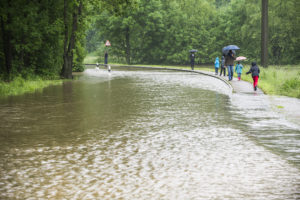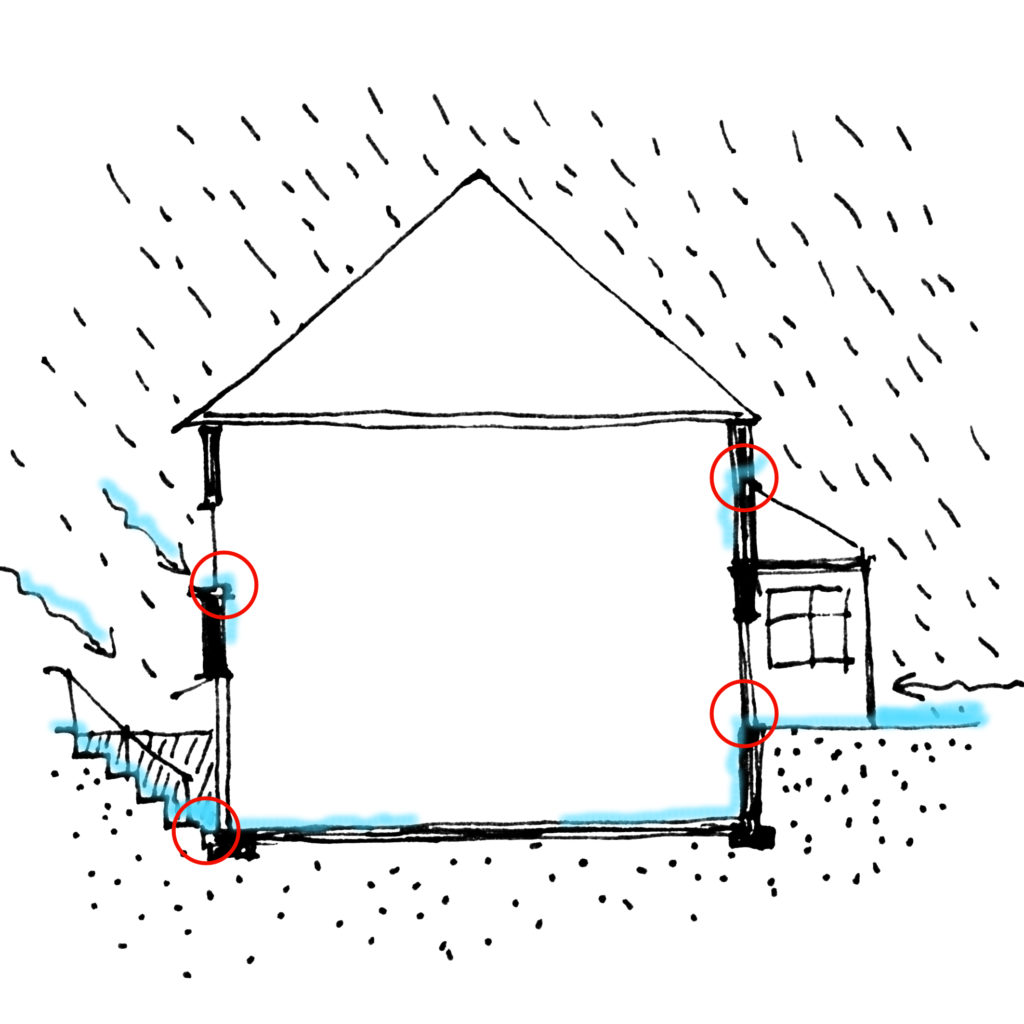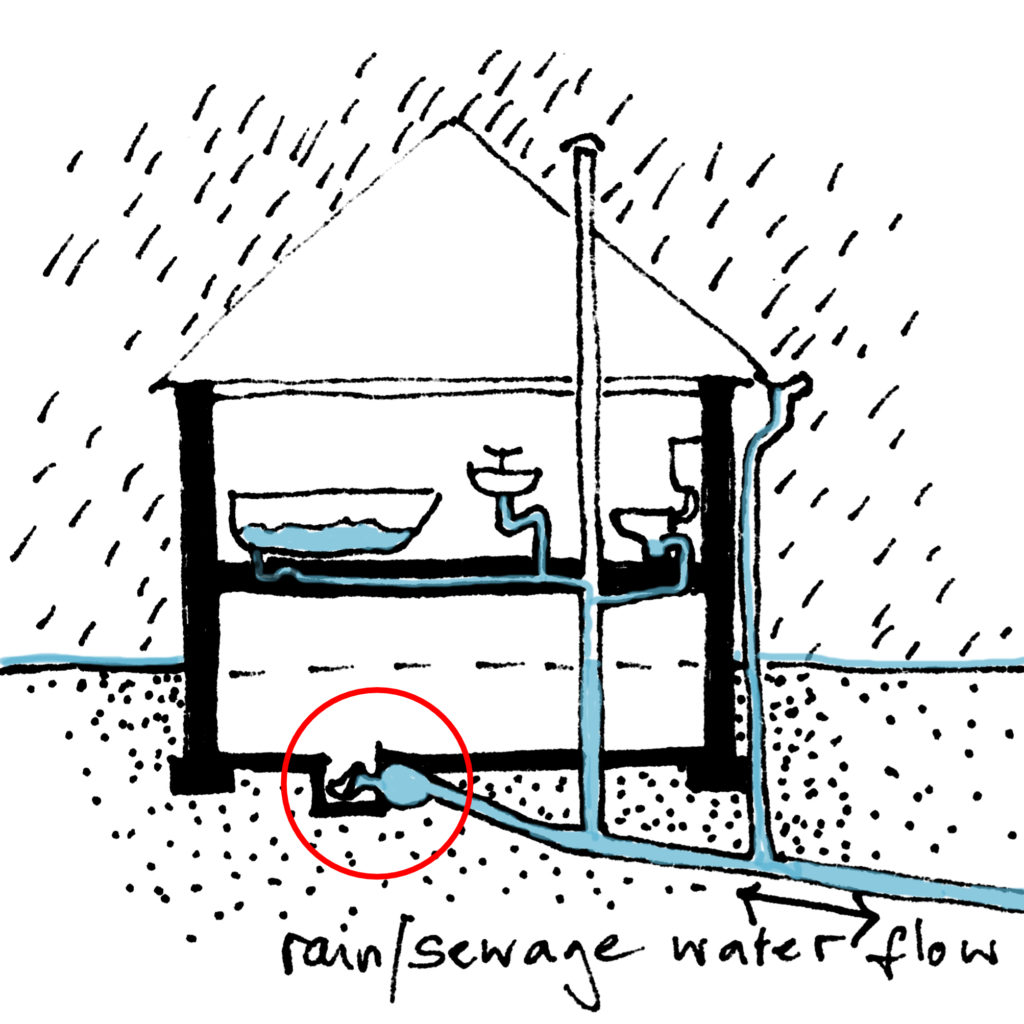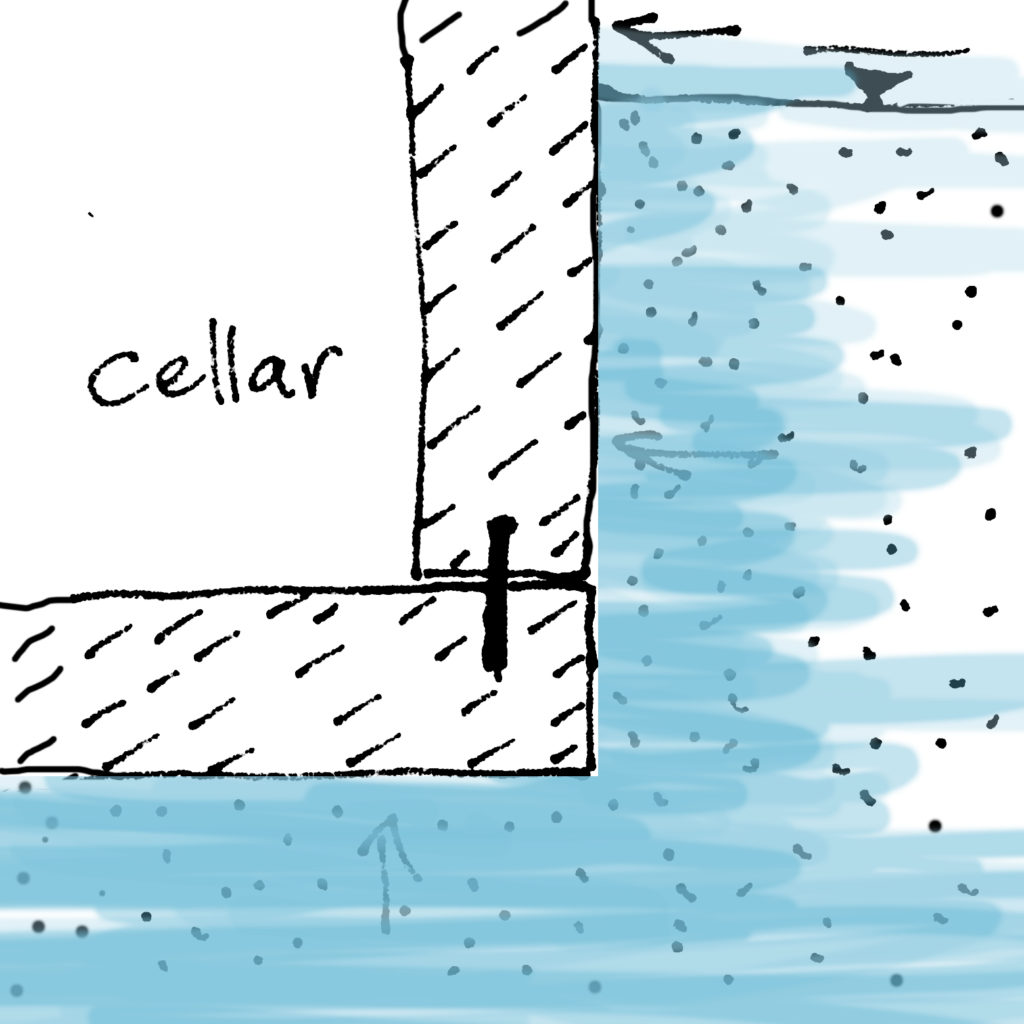Take action
as PRIVATE PERSON

Are you aware of potential risks and are you prepared in case of heavy rain events? Find out about the risks, potential damages and how you can prepare yourself and your family as well as your property and surroundings to prevent damages. Here, the most relevant information is summarised and you will be directed to the tools in the Toolbox that are relevant for you.
KEY FACTS ABOUT HEAVY RAIN EVENTS
- Heavy rain events often occur in connection with severe summer thunderstorms.
- They lead to local flooding and sometimes cause extreme damage.
- Almost any location can be affected, even if it is not located close to a water body.
- The advance warning time is extremely short.
- Experts expect heavy rain events to occur more frequently in the future.

UNDERSTAND WHAT MIGHT HAPPEN...
... to me or the people around me:
The occurrence of surface flooding highly depends on the amount of rainfall, on the topographic conditions in your surroundings and on the ability of the ground to take up rainwater.
Often, the danger of surface runoff is underestimated. During a heavy rain event and the subsequent flooding, people regularly get seriously hurt or even loose their lives.
Find out what you can do to stay safe and secure, and protect yourself from injuries and loss of life!

... to my house or property:
Water can enter a building via different paths and cause different kinds of damages depending on the entry point.

Rainwater
Rainwater can enter the building via building openings (e.g. doors, stairs, light shafts or garage entrances)
Possible damages:
- Flooded cellars with damage to washing machines, hobby rooms, etc.
- Flooded underground garages and damage to vehicles
- Flooded ground floor housing areas
- Damage to the building substance, depending on the building material
- Floating of oil tanks, oil damage and subsequent environmental pollution
- Mud deposition and contamination

Backwater
Backwater from the sewerage system can cause flooding and damage if appropriate safety measures (e.g. backwater flaps) are not taken.
Possible damages:
- Destroyed household goods
- Damages to building fabric
- High costs for dehumidification and renovation work
- Health risks for the residents, e.g. through waste water

Seepage water
Seepage water can lead to wetting of the building and put underground pressure on the building.
Possible damages:
- Moisture damage such as stains or discoloration
- Leaching of masonry
- Spalling due to corrosion of reinforcement or frost damage
- Rust on steel constructions
- Rotting and swelling of wooden constructions
- Floating of the building and loss of stability
- Health risks for residents due to follow-up damage such as mould, bacteria or dry rot
WHAT CAN I DO?
Find out if your home might be at risk:
Get available hazard and risk information
from authorities or experts
- Check out Tool ASSESSMENT and MAPPING, Practitioners’ corner
- Take a look at the guideline on PREVENT DAMAGES
- Be aware and become familiar with EARLY WARNING SYSTEMS
- In some countries there is a network of experts ready to consult you on the flooding risks at your home or property. As examples, see OUR STORY other flood protection certificate [pdf; 872 KB] in Saxony, Germany.
Prepare your own simplified risk assessment
- Bundesministerium für Nachhaltigkeit und Tourismus: Eigenvorsorge bei Oberflächenabfluss. Ein Leitfaden für Planung, Neubau und Anpassung. Wien 2019
- Stadtentwässerungsbetriebe Köln: Wassersensibel planen und bauen in Köln. Leitfaden zur Starkregenvorsorge für Hauseigentümer, Bauwillige und Architekten. Köln, 2016
Design your personal emgergency plan:
Major factors for reducing damages and losses are
- the adaptation of your building and property to reduce the ways water can enter your building,
- your ability to react wisely in a risk situation!
Design your personal emgergency plan.
What can I do to protect myself and others? Act wisely during heavy rain events!
- Keep calm! Act deliberately!
- The protection of human life has the highest priority! Be aware that people take precedence over belongings! Bring children, sick and elderly people to safety in good time!
- Follow the instructions of the emergency services!
- Stay away from basements or underground car parks if there is a risk of flooding! You could drown or be electrocuted!
- Avoid contact with floodwater! It may be heavily contaminated.
- Floodwater often flows at high speed. Avoid the risk of drowning and stay away from flowing water!
- Do not drive on flooded roads! The water depth cannot be estimated and strong currents could sweep the car away. Open manhole covers can also pose a risk. If water enters the engine compartment, there is a risk of total loss of the vehicle.
- Immediately inform the fire brigade or the supply company in case of escaping pollutants or gas odour! Wait until the water in the cellar has completely drained and the ground water level has sunk before pumping out the water! Otherwise there is a risk of permanent damage to the masonry, the stability of the building may be damaged or the building may float.
What can I do to protect my home? Act wisely in times without heavy rain and prevent damages!
- Store valuable items and personal memorabilia in a place that is (relatively) safe against flooding.
- Which things would you need to take with you when you need to leave your home suddenly (e.g. important documents, medicine)? Make a list and store it in a defined place.
- Get insurance: In some countries it is obligatory to be insured against damages from natural hazards. In any case, it is useful and pays out in the case of an emergency!
- Get further ideas about technical, natural and preparation strategies and possibilities in the section PREVENT DAMAGES
- Get an overview on possible risk reduction measures for a building in ourCATALOGUE OF 100 RISK REDUCTION MEASURES.
WHERE DO I GET FURTHER INFORMATION?
Look at the section on PREVENT DAMAGES to find relevant information material and hyperlinks from your country.

